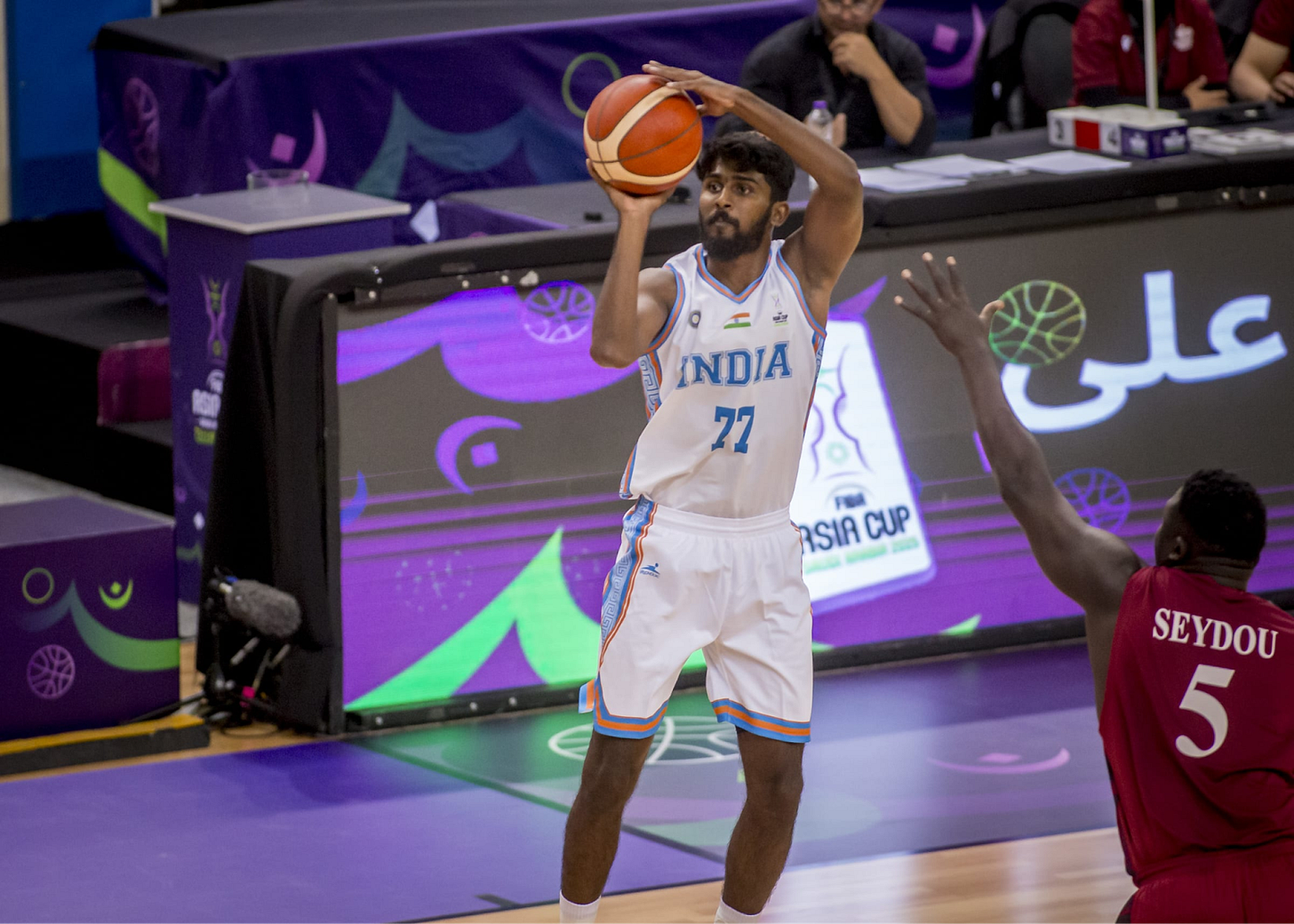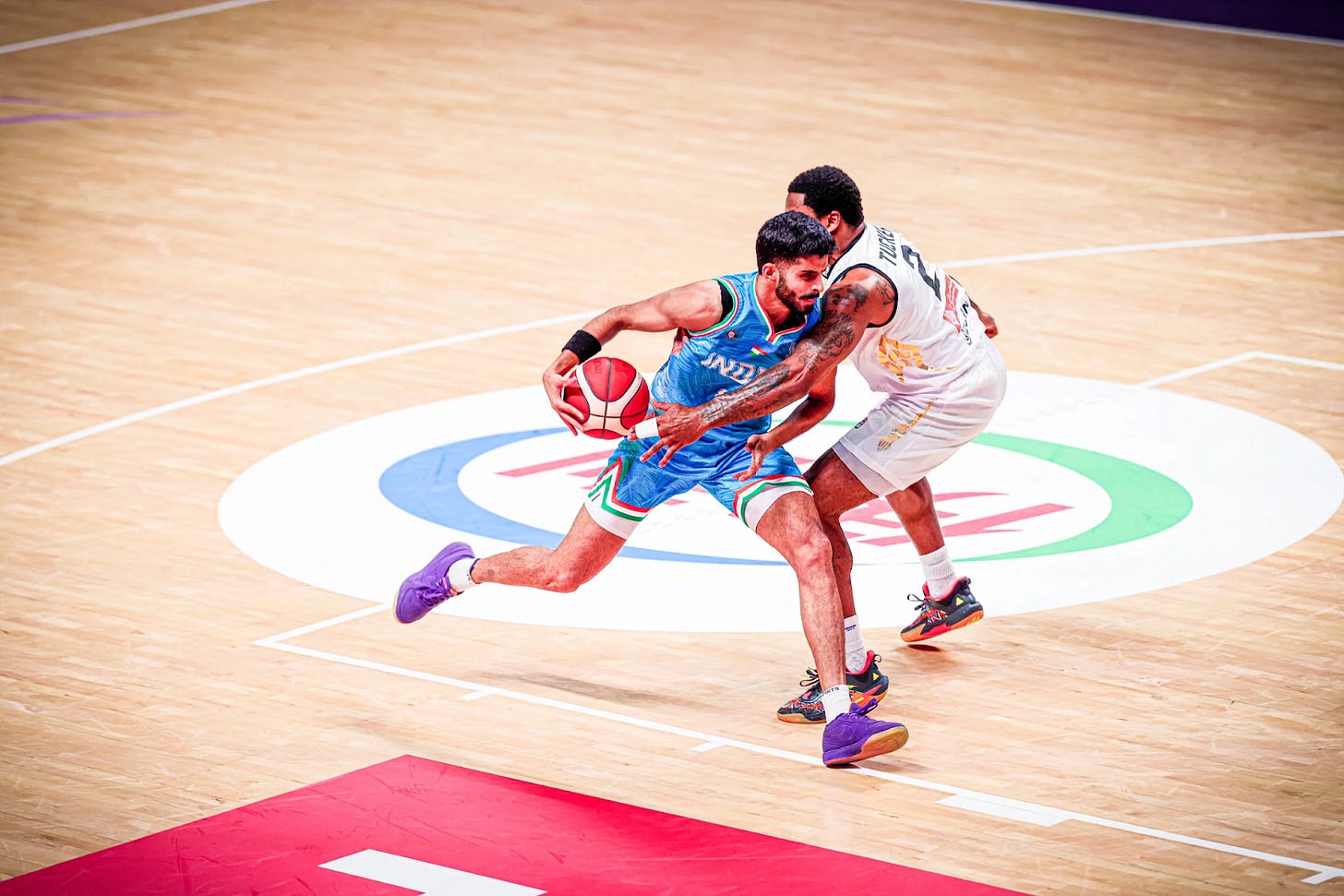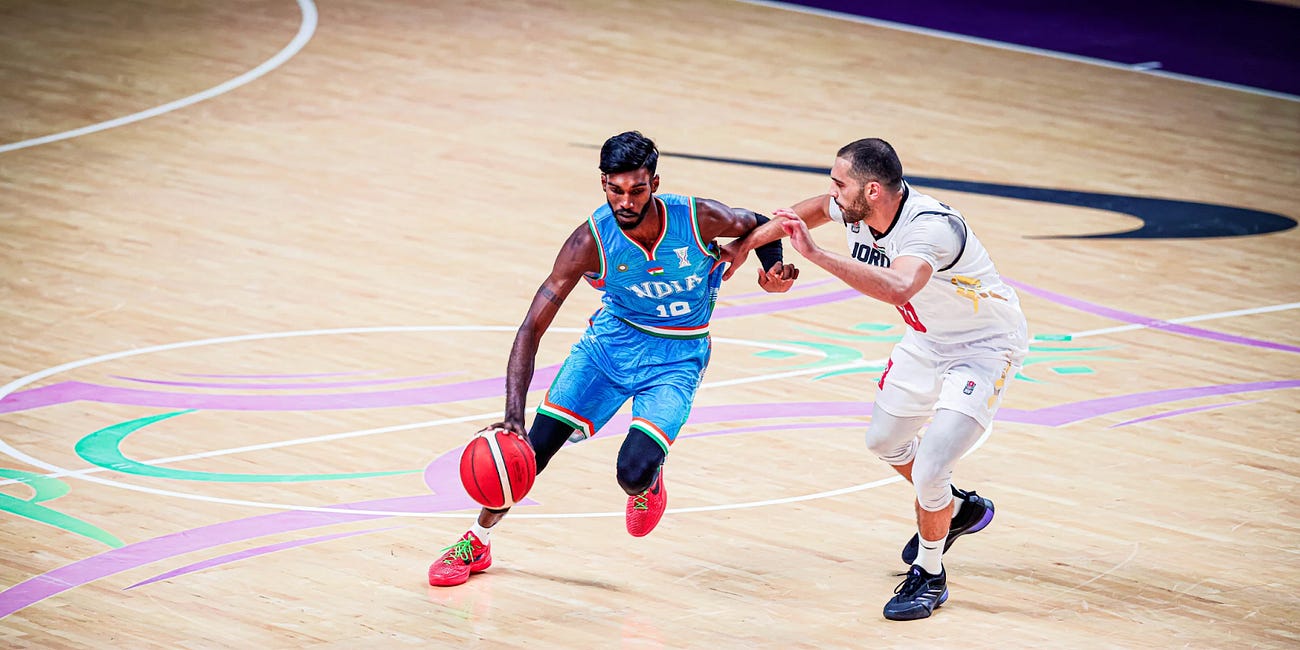Can India’s Basketball Future Be Built Around the Three-Point Shot?
India claimed to have entered the FIBA Men’s Asia Cup 2025 with a new identity focused on shooting, but their winless campaign showed the road ahead is steep.
When Scott Flemming took charge of the Indian men’s basketball program for the second time last year, he faced an uncomfortable truth. They lacked the size, strength, or experience to match Asia’s elite. So, Flemming had to focus on the one thing they could develop: shooting.
During a FanCode-organized media interaction before the FIBA Men’s Asia Cup (August 5–17), Flemming outlined the direction the men’s basketball team needed to take to become a “shoot-first” squad.
Unfortunately, India’s run in Jeddah ended with three group-phase losses to Jordan, China, and hosts Saudi Arabia.
And poor shooting itself was one of the key culprits.
Building an Identity Through Shooting

Flemming insisted that defense and rebounding remain foundational, but shooting was the team’s best chance.
“Defense is always the key. On any team I’ve coached, the first thing we preach is defense and rebounding. That’s been the case for 40 years on all of my teams, and we’ve really emphasized it with this group as well,” he said. “The other thing I focused on when I took over this team was identifying what we could do better than anybody else. We may not be the biggest, the strongest, or have naturalized stars, but what do we have that can make us stand out?”
Flemming explained:
“Looking at our squad, I realized we had some really good shooters. So, we built around that. We spent a lot of time in practice working on our perimeter shooting, and we’ve placed an emphasis on becoming a strong three-point team. I believe we can be as good as anyone maybe even the best in that department.”
Initial Success

The logic behind building Flemming’s approach has already been validated.
Earlier this year, India beat Iraq 97–77, knocking down 16 three-pointers to fuel the win. They then stunned Bahrain, a team ranked 15 places higher, by hitting 14 threes on 29 attempts in an 81–77 victory.
Those results showed the potential of the Young Cagers to upset stronger opponents through perimeter firepower. But at the Asia Cup, that same shooting touch deserted them.
Asia Cup 2025: A Harsh Reality Check
The stats underline the issue.
India attempted 24.3 three-pointers per game (#12 among all 16 teams), and converted just 27.4% (13th best overall).
For a shooting-first team, that is far too low.
By contrast, Asia’s traditionally elite perimeter teams, Japan and Chinese Taipei, regularly hit above 35–38%. Incredibly, these were not even the two best shooting sides - with that honour going to China (39.9% 3PT) and Australia (38.9%).
This goes to show that while India may have ‘announced’ its ‘shooting identity’, it is conventionally physical and tall squads like China and Australia who are practically showcasing it.

Inside the arc, India actually fared better, shooting 50% on twos, and when they attacked the paint, centers like Palpreet Singh Brar (66.7% FG) and Princepal Singh (52.9% 2PT) showed efficiency.
Pranav Prince emerged as India’s top scorer at 11.7 points per game, shooting 33.3% from beyond the arc. Arvind Muthu Krishnan added 11.0 PPG, though less efficiently from deep (31.3%).
India’s remaining perimeter players - point guards Muin Bek Hafeez and Sahaij Sekhon, and shooting guards Harsh Dagar and Kanwar Gurbaz Sandhu - all failed to impress from downtown.
A Young Team With Time to Grow

Flemming’s ‘shoot-first’ strategy is not misplaced.
In a continent where naturalized stars and dominant big men often decide games, shooting is arguably our best chance.
It’s also worth remembering that India’s is still a young squad, with several core players in their early 20s. International experience is limited, and shooting under pressure is very different from practice or domestic competition.
Can Pranav PRINCE Become India Basketball’s Scoring KING?
Before the 2025 FIBA Men’s Asia Cup tipped off on August 5, Pranav Prince struck a team-first tone at a pre-event press conference hosted by FanCode.
The Asia Cup Qualifiers victories over Iraq and Bahrain showed the prowess of India when the plan clicks. But the Asia Cup ‘main event’ highlighted the scary side: when shots don’t fall, India has no safety net.
So, the next step isn’t abandoning the strategy but refining it.
India needs to push three-point accuracy to 35%+, develop multiple scoring threats, and improve rebounding so cold nights don’t become automatic defeats.
Most importantly, with the 2027 World Cup Qualifiers later this year, the Cagers need more exposure games to translate practice shooting into performance under pressure.
***
If you've come this far...
Appeal to readers - ₹₹ Support Ekalavyas: Ekalavyas is India's first and only basketball media company. We are not foreign-funded, nor investor backed. Your support and encouragement have got us this far. We now need your financial assistance to ensure we can keep providing you timely, accurate and important information. Please contribute via https://razorpay.me/@ekalavyas 🙏🏾. We are accepting contributions as low as Rs. 1/- (including a small processing fee charged by the payment gateway provider). Thank you for playing a part in keeping media independent and objective!





